A Comprehensive Guide to CNC Milling Parts
CNC milling parts have revolutionized the manufacturing industry, making it possible to create complex parts with unprecedented precision. But how do these machines work? How do they achieve such exceptional accuracy when producing CNC milling parts?
In this blog post, we’ll dive into the world of CNC milling and explore the core components, axes, tooling, and support systems that work together to turn raw material into perfectly machined parts. Are you ready to uncover the secrets of precision machining and CNC milling parts?
1.Key Takeaways for CNC Milling Parts
• CNC milling is a complex CNC machining process that involves a variety of components working together to create precision parts with the desired surface finish.
• The CNC controller, column and base structure, powered feed mechanisms, axes, and tooling are all critical to achieving accuracy and precision in machining operations.
• The difference between CNC machining and manual machining depends on the complexity of the project. Programming cutting tools and core components are required to go from raw material to finished part.
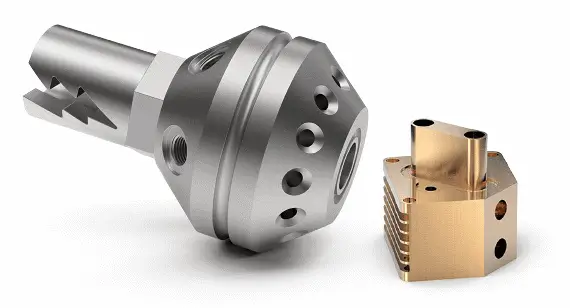
2.Explore the Core CNC Milling Parts
CNC milling is an engineering marvel that combines various components to transform raw materials into complex shapes and designs. The machine control unit (MCU) plays a key role in managing the movement and operation of the machine, while the core components work together to achieve efficient operation and precise CNC machine working capabilities.
A CNC milling machine consists of several major components, including:
• CNC controller
• Column and base structure
• Power supply mechanism
• Tool changer
• Table and T-slot
• Spindle and servo motors
• Display unit and control panel
These CNC milling parts work together to ensure that the milling operation is precise, transforming raw materials into customized parts with the desired surface finish.
1) The Heart of CNC Milling Parts: CNC Controller
As the brain of the CNC milling machine, the CNC controller has several important functions:
• Interprets G-code instructions
• Manages the movements and operations of the factory
• Translates inputs into corresponding machine actions
• Executes commands by sending appropriate signals to stepper and servo motors.
The Machine Control Unit (MCU) is a critical component of a CNC milling machine. It performs several important functions, including:
• Regulating the movement and operation of the milling machine according to G-code instructions
• Interpreting G-code coordinates into movements performed by the servo motors along the machine axes
• Controlling the tool changer and coolant activation
• Interpreting feedback from sensors to verify the position of the tool after the move is completed
The MCU plays a vital role in ensuring precise milling operations.
2) Pillars: Pillar and Base Structures
The pillar and base structures provide the necessary support and stability for precise and consistent machining. These structures are typically made of materials such as epoxy granite, cast iron, or aluminum to provide the required strength and rigidity.
The design of the pillar and base structure greatly improves the accuracy of the CNC milling machine, minimizing vibration and deflection during machining, thereby ensuring high precision and accurate cutting.
In addition, the design of the pillar and base structure also affects the weight distribution of the machine, further improving its stability and precision.
3) Pushers: Power Feed Mechanism
The power feed mechanism ensures that the workpiece and cutting tool move precisely along the machine axes, allowing for accurate cutting operations. The mechanism consists of the following parts:
• Knees
• Driving system
• Bed
• T-slots
All CNC milling parts work together to regulate the vertical, longitudinal, and lateral feeds of the machine, including the use of vertical set screws.
While traditional CNC machine beds move along the horizontal X and Y axes, advanced 5-axis machine beds can perform rotational movement along the X and Y axes for more precise control.
This versatility enables CNC machines to handle a wide range of cutting and forming tasks, resulting in highly precise and intricate CNC milling parts.
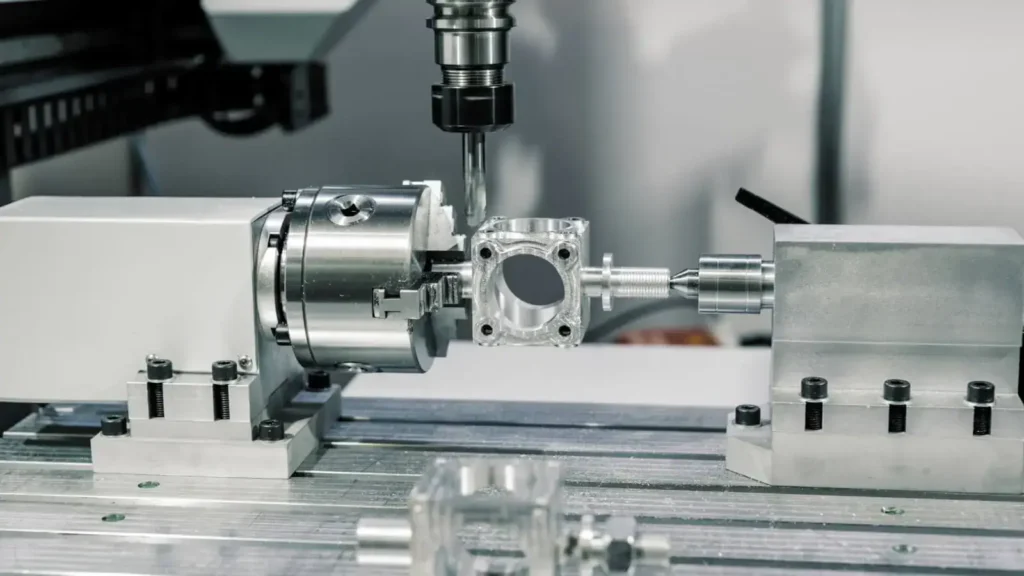
3.Precision in Motion: Axes and Their Importance
The X, Y, and Z axes in a CNC milling machine control the movement of the cutting tool and workpiece, allowing for machining with high precision and accuracy.
Understanding the importance of these axes in a CNC milling machine is essential to realizing the full potential of these powerful tools.
The different axes in milling include:
• The Z-axis controls the vertical movement of the cutting tool or workpiece, providing precise positioning and depth control during the milling process.
• The X-axis allows movement from left to right and vice versa, parallel to the cutting tool.
• The Y-axis controls the vertical movement of the part.
The combination of these three axes enables CNC machines to create complex shapes and contours in materials, resulting in precise and accurate This versatility enables CNC machines to handle a wide range of cutting and forming tasks, resulting in highly precise and intricate CNC milling parts..
1) Achieving Depth: The Role of the Z-Axis
In CNC milling, the Z-axis significantly affects the depth of cut. It regulates the vertical movement of the tool, allowing for precise control of the depth of the machining operation. By interacting with the X-axis and Y-axis, the Z-axis is able to create complex three-dimensional CNC milling parts with high precision.
Problems with the Z-axis, such as irregular movement or inconsistent depth determination, can be resolved by checking for loose or faulty control cards, troubleshooting the coordinate determination process, or checking for jamming or slipping.
By ensuring the accuracy of the Z-axis, CNC milling machines can achieve optimal depth control, enabling the manufacture of complex and detailed parts.
2) Lateral Dynamics: Understanding the X and Y Axes
The X and Y axes control the lateral movement of the cutting tool and workpiece, facilitating precise and uniform machining on the material surface. The X axis represents movement from left to right or right to left parallel to the cutting tool, while the Y axis represents movement from front to back.
Collectively, these axes determine the precise positioning and movement of the cutting tool, facilitating precise and controlled machining on the material surface.
The CNC controller coordinates with the motor and drive components to move the X and Y axes, precisely controlling the position and movement of the cutting tool during the milling process. This precise control ensures that the This versatility enables CNC machines to handle a wide range of cutting and forming tasks, resulting in highly precise and intricate CNC milling parts. are consistent and meet the required specifications.
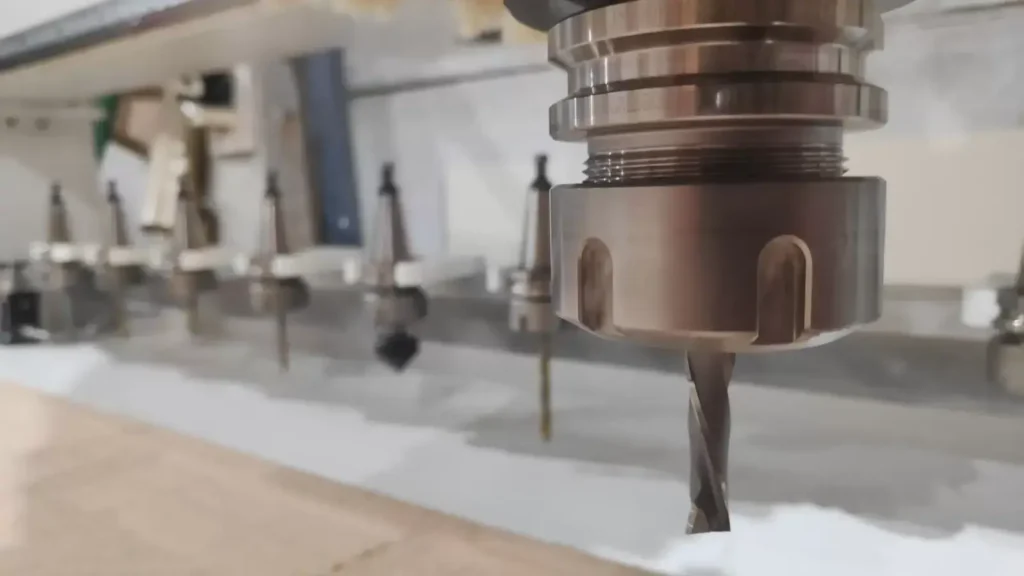
4.Cutting-Edge Technology: Tools and Accessories
CNC milling machines use a variety of machine tools and accessories, each of which plays an important role in achieving the desired machining results. From cutting tools to coolant systems, these accessories work together to improve the accuracy and efficiency of the machine.
Selecting the right milling tool is key to ensuring high performance and quality of This versatility enables CNC machines to handle a wide range of cutting and forming tasks, resulting in highly precise and intricate CNC milling parts.. Additionally, coolant systems help extend tool life and improve surface finish, thereby reducing heat and friction during the milling process.
By understanding the roles and functions of these different tools and accessories, operators can optimize their CNC milling machines for maximum precision and accuracy.
1) Multi-function Tool Changer
In a CNC milling machine, a tool changer allows for seamless switching between different cutting tools during the milling process without stopping the machine. This feature greatly increases efficiency and productivity by enabling multiple machining operations to be performed in a single setup.
There are various types of tool changers available to suit different milling operations and machining needs. These include:
• Automatic tool changer with chain magazine
• Turret head type
• Drum ATC
• Disc ATC
By incorporating a multi-function tool changer into the CNC milling process, operators can easily and accurately complete a variety of tasks, including using a CNC router.
2) Extend tool life with a coolant system
In CNC milling, the coolant system helps extend the life of the cutting tool and improves the surface finish of the This versatility enables CNC machines to handle a wide range of cutting and forming tasks, resulting in highly precise and intricate CNC milling parts. by reducing heat and friction during machining.
By maintaining the optimum cutting temperature and lubricating the cutting tool, the coolant system minimizes wear on the tool and workpiece, ultimately improving machining efficiency and extending tool life.
When selecting a CNC milling coolant, the following factors should be considered:
• Material compatibility
• Tool requirements
• Cutting conditions
• Corrosion protection
• Extended tool life
• Cost
All of these should be taken into account. By carefully selecting and using the right coolant system, operators can significantly improve the performance and life of cutting tools and achieve better surface finish on CNC milling parts.
5.Supporting roles: minor but essential parts
In addition to the main components, CNC milling machines require minor but critical components for controlling the movement of the cutting tool, supporting the spindle, and fixing the workpiece during machining.
These CNC milling parts, such as servo motors, ball screws, and linear guides, work in conjunction with the primary components to ensure that the machine operates effectively and efficiently.
These secondary components may not be as prominent as the core components of a CNC milling machine, but they play a vital role in achieving the precision and accuracy required for the final machined product.
By understanding the importance of these CNC milling parts and how they affect the overall performance of a CNC milling machine, operators can optimize their machines for maximum precision and efficiency.
1) Material Storage Area: Tables and T-Slots
By providing a stable platform for holding workpieces during machining, tables and T-slots ensure high-precision and consistent results. Tables are typically made of durable materials such as aluminum or cast iron, providing a reliable surface for holding workpieces during milling.
T-slots are integral components for holding and clamping workpieces, designed to work with T-nuts to securely clamp and position workpieces during machining. T-slots offer flexibility and versatility in holding a variety of fixtures and accessories, simplifying the setup and holding of workpieces for precise milling.
The table and T-slots ensure precision and accuracy in the CNC milling process by providing a stable platform for the material.
2) Drive: Spindle and Servomotors
The spindle and servomotors are responsible for driving the cutting tool and controlling its movement along the axis of the machine tool, enabling precise and efficient machining operations.
The spindle motor provides the torque, speed, and accuracy required for precise cutting and machining, while the servomotor controls the precise position of the mechanical components by receiving electrical signals and converting them into motion.
By ensuring that the spindle and servomotors are functioning properly, operators can achieve optimal performance and precision in their CNC milling machines. These motors play a key role in driving the cutting tool and controlling its movement during the milling process, resulting in highly accurate and complex CNC milling parts.
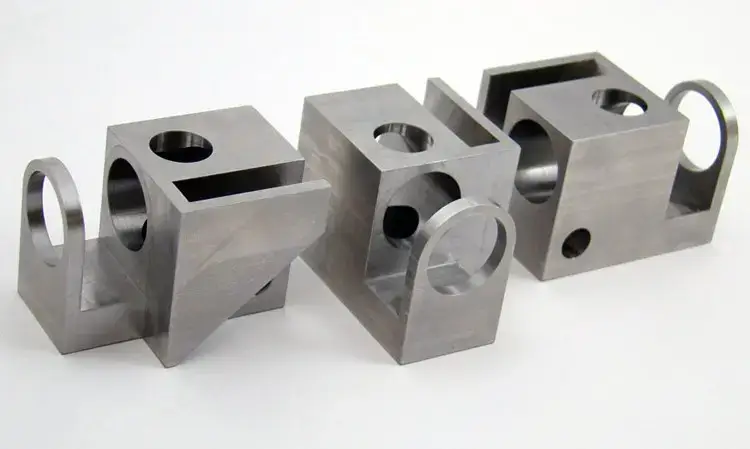
6.Improving Precision: Feedback and Control Systems
Feedback and control systems are used to improve the accuracy and precision of CNC milling machines. These systems include position feedback systems, velocity feedback systems, and adaptive control systems, which work together to verify and adjust the precise position of mechanical components during the milling process.
By incorporating these feedback and control systems into a CNC milling machine, operators can ensure that the machine maintains optimal performance and precision throughout the machining process.
These systems play a vital role in achieving the desired precision and consistency in the final machined product, making them an essential component of any CNC milling machine operation.
1) Eyes of the Machine: Display Unit and Control Panel
The display unit and control panel are the primary interface between the operator and the CNC milling machine, allowing the machine’s operation to be monitored and controlled. The display unit provides the operator with important information about the machine’s status, while the control panel enables the operator to input commands and adjust the machine’s settings and parameters.
By ensuring that the display unit and control panel are functioning and interacting properly, operators can monitor and control their CNC milling machine for optimal performance and precision.
These CNC milling parts play a vital role in the overall operation of the CNC milling machine, allowing the operator to achieve the desired precision and consistency in the final machined product.

7.Customizing CNC Machining for Specific Needs
Design considerations, material selection, tool selection, and design optimization allow CNC machining to be customized to meet specific needs and requirements. By customizing the CNC machining process to meet the unique requirements of a specific project, operators can achieve precise results based on the specific needs of their customers.
A key factor in custom CNC machining is choosing between manual machining and CNC precision, taking into account the following factors:
• Accuracy
• Time
• Technical experience
• Labor
• Productivity
• Cost
By carefully considering these factors and adjusting the machining process accordingly, operators can achieve the desired level of customization and precision for their specific needs.
1) Adjusting Complexity: Manual Machining vs. CNC Precision
Manual machining may be appropriate for simpler parts, while CNC precision is suitable for complex parts that require high accuracy and consistency. The choice between manual and CNC precision depends largely on the complexity of the project.
CNC machines are the preferred choice for highly complex CNC milling parts because they are able to produce complex features such as:
• Holes
• Slots
• Recesses
• Pockets
These features can be created on any surface of the workpiece. In contrast, manual machining offers flexibility and adaptability for unique or complex CNC milling parts geometries, making it a viable option for certain projects.
By understanding the unique requirements of each project and adjusting the machining process accordingly, operators can achieve the best level of customization and precision for their specific needs.
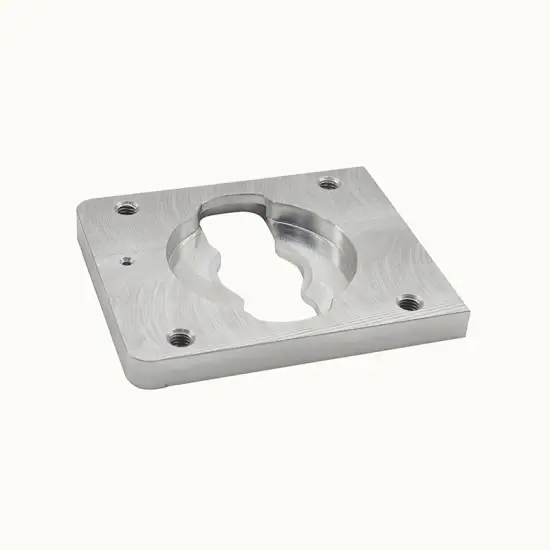
8.CNC Milling in Action: From Raw Material to CNC Milling Parts
The CNC milling process transforms raw material into finished machined parts through a series of precise cuts made by a rotating cutting tool. CNC milling is programmed to move the tool through the raw material to form complex shapes and designs that meet the desired specifications.
Each component of a CNC milling machine plays a role in achieving these precise and accurate results. Core components, axes, tools and accessories, and secondary components work together to ensure that the CNC milling process provides the desired precision and accuracy in the final machined product.
By understanding the role and function of each component, operators can optimize their CNC milling machine for maximum precision and efficiency.
9.In Summary
In summary, CNC milling machines combine a range of CNC milling parts and systems to achieve unparalleled precision and accuracy in the manufacturing process. From the core components and axes that control the movement of the cutting tool to the support elements that provide stability and control, every aspect of a CNC milling machine plays a vital role in achieving the desired results.
By understanding these CNC milling parts and their capabilities, operators can optimize their CNC milling machines for maximum accuracy, efficiency, and effectiveness to create complex and precise parts tailored to their specific needs.
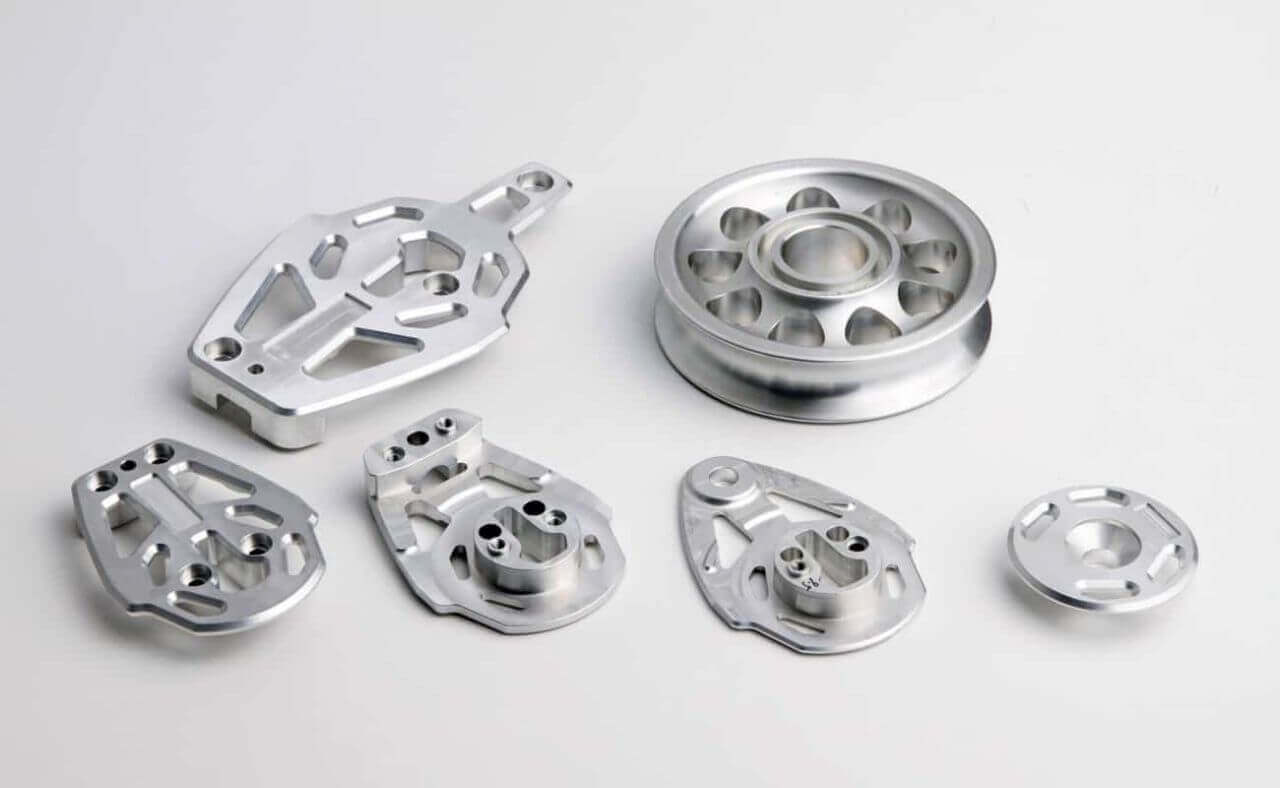
5 Comments
Greetings! Very useful advice within this post!
It’s the little changes that make the most important changes.
Thanks a lot for sharing!
Hello There. I discovered your weblog the usage of msn. That is an extremely well
written article. I’ll be sure to bookmark it and come back to read
more of your useful info. Thanks for the post. I will certainly return.
Hey there! This is my first visit to your blog! We are a collection of volunteers and starting a new initiative in a
community in the same niche. Your blog provided us beneficial information to work on. You have done a marvellous job!
Hi there, just became aware of your blog through Google, and found that
it is really informative. I’m gonna watch out for brussels.
I will be grateful if you continue this in future. A lot of people will be benefited from
your writing. Cheers!
Very good blog post. I certainly appreciate this website.
Continue the good work!